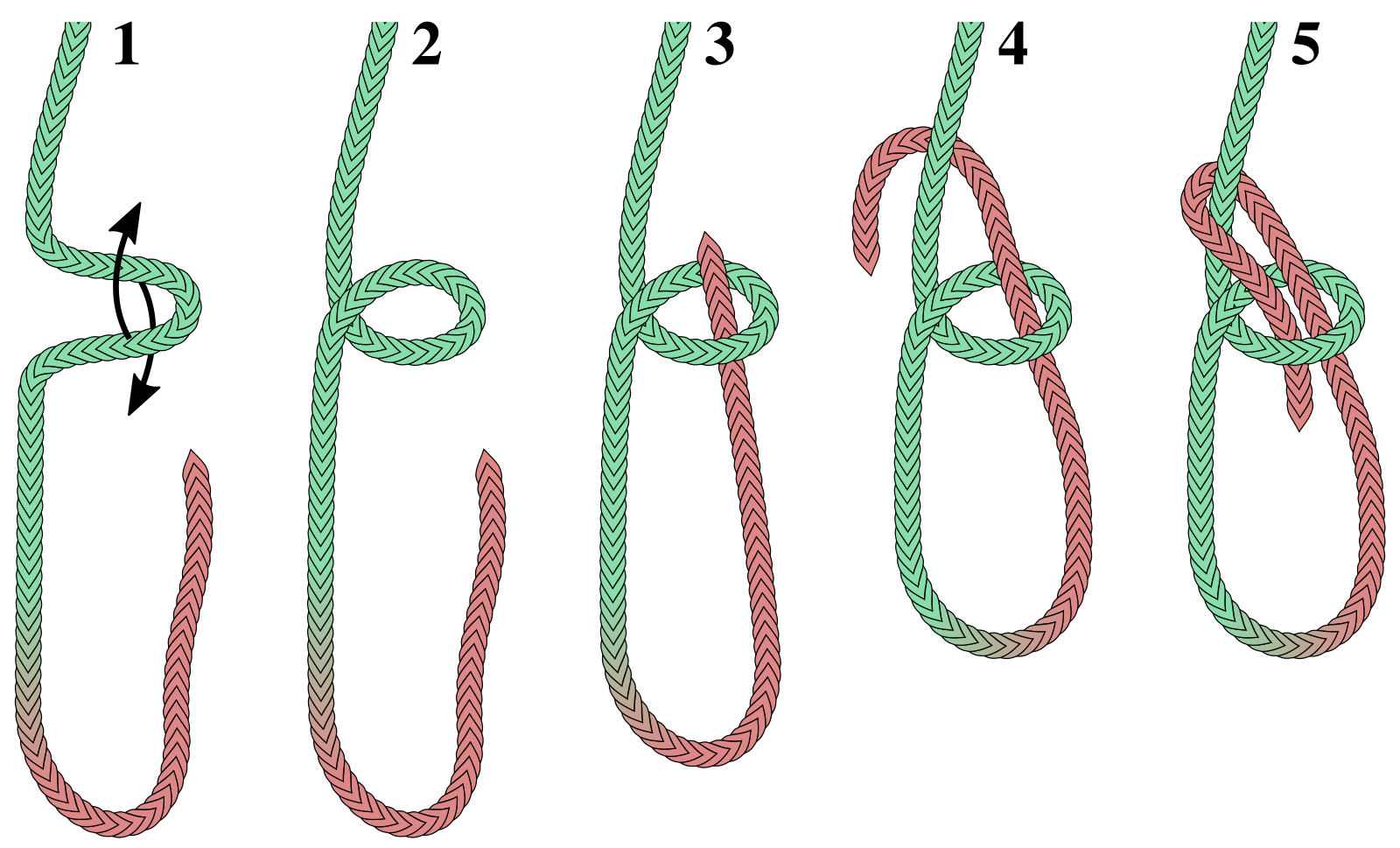|
Left-hand Bowline
The cowboy bowline or left-hand bowline, is a variation of the bowline loop knot. The cowboy bowline has the working end go around the standing part on the side closer to the loop and results with the working end outside the loop. In contrast, a regular bowline has the working end finishing inside the loop. (The "rabbit" goes around the "tree" in the opposite direction from normal.) ''The Ashley Book of Knots'' states that it is "distinctly inferior" to the standard bowlineClifford W. Ashley, ''The Ashley Book of Knots'' (New York: Doubleday, 1944), p.188 #1034½. because of its similarity to the left-hand sheet bend.Clifford W. Ashley, ''The Ashley Book of Knots'' (New York: Doubleday, 1944), 16. Various tests of the different versions' strengths show little difference; conjecture about either knot's vulnerability to some failure remain pretty much only that – conjectures. However, the left-hand bowline is much more stable under ring loading, as it then acts effectively a ... [...More Info...] [...Related Items...] OR: [Wikipedia] [Google] [Baidu] |
Bowline
The bowline () is an ancient and simple knot used to form a fixed loop at the end of a rope. It has the virtues of being both easy to tie and untie; most notably, it is easy to untie after being subjected to a load. The bowline is sometimes referred to as ''king of the knots'' because of its importance. Along with the sheet bend and the clove hitch, the bowline is often considered one of the most essential knots. The common bowline shares some structural similarity with the sheet bend. Virtually all end-to-end joining knots (i.e., bends) have a corresponding loop knot. Although the bowline is generally considered a reliable knot, its main deficiencies are a tendency to work loose when not under load (or under cyclic loading), to slip when pulled sideways, and the bight portion of the knot to capsize in certain circumstances. To address these shortcomings, a number of more secure variations of the bowline have been developed for use in safety-critical applications, or by s ... [...More Info...] [...Related Items...] OR: [Wikipedia] [Google] [Baidu] |
Eskimo Bowline
The Eskimo bowline, Cossack knot (), reverse bowline, or 'anti- bowline' is in a class of knots known as 'eye knots' or ' loop knots'. The eye is formed in the end of the rope to permit attachments/connections. It is quite common in Russia and is often used instead of the bowline (ABoK #1010). In the simple bowline, the collar component forms around the 'standing part'. In contrast, the collar component of an Eskimo bowline forms around the outgoing eye-leg. On the first of arctic explorer John Ross' expeditions (1818) the Inuit (Eskimos) presented him a sled that contained several of these knots, showing that it is a genuine Inuit knot. The knot is not mentioned in ''The Ashley Book of Knots ''The Ashley Book of Knots'' is an encyclopedia of knots written and illustrated by the American sailor and artist Clifford W. Ashley. First published in 1944, it was the culmination of over 11 years of work. The book contains 3,857 numbered ent ...'' but in its Russian equivalent, t ... [...More Info...] [...Related Items...] OR: [Wikipedia] [Google] [Baidu] |
Sheet Bend
The sheet bend (also known as weaver's knot and weaver's hitch) is a bend knot. It is practical for joining lines of different diameter or rigidity. It is quick and easy to tie, and is considered so essential it is the first knot given in the '' Ashley Book of Knots''. Additionally, it is one of the six knots given in the International Guild of Knot Tyers' Six Knot Challenge, along with the clove hitch, bowline, reef knot (square knot), round turn and two half-hitches, and sheepshank. The sheet bend is related in structure to the bowline; like the bowline, it has a tendency to work loose when not under load. For increased security, it is sometimes recommended that one add another turn in the smaller end, making a double sheet bend; in most cases, however, a single sheet bend should suffice. The becket hitch is another structurally similar knot. As a bend, its advantages lie in its simplicity and non-jamming properties. It is commonly taught in Scouting. Definition A ... [...More Info...] [...Related Items...] OR: [Wikipedia] [Google] [Baidu] |
Lapp Bend
The Lapp knot is a type of bend (knot), bend. It has the same structure as the sheet bend, but the opposite ends are loaded. The slipped Lapp bend (among arbourists known as quick hitch) is also an ''exploding knot'', which means that when pulling the quick release end it falls completely apart without further entanglement. It is as strong as or even stronger than the sheet bend, though much less common. The Lapp knot is closely related to the sheet bend, the bowline and the Eskimo bowline. They all share the same core structure, but differ in how the four ends are loaded. The Lapp knot was sometimes called 'false sheet bend', which might explain its low popularity. Lapp bend A way to tie the knot is shown in the image to the left. The orientation of the green bight is important: Its working end should end up on the same side as the red lines slip bight, or as the red working end when tying the non-slip version (A & C). If they end up on opposite sides (B & C), the resulting kn ... [...More Info...] [...Related Items...] OR: [Wikipedia] [Google] [Baidu] |


